Well-known for the wonderful panoramic views it provides of the city of Budapest, the castle-like Fisherman’s Bastion was built in 1905, mainly for decorative purposes.
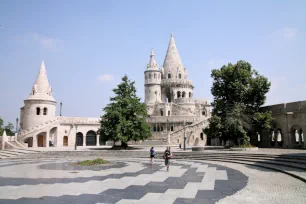
The bastion is located right behind the Matthias Church in the Castle District. It is one of the city’s biggest tourist draws and functions as some sort of ornate viewing platform.
The Fisherman’s Bastion was built on the site of an old rampart that, during the Middle Ages, was defended by the guild of fishermen, who lived nearby in Vízívaros (water town), at the foot of the hill. Thus, the name of the bastion. An old fish market also sat at this location during medieval times.
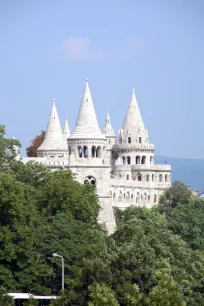
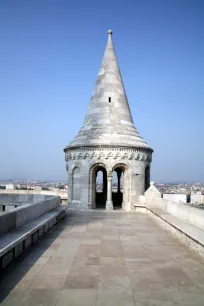
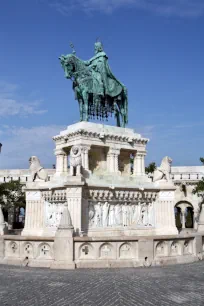
The Bastion
Designed by architect Frigyes Schulek and built between 1899 and 1905, the white-stoned Fisherman’s Bastion is a combination of Neo-Gothic and Neo-Romanesque architecture and consists of turrets, projections, parapets, and climbing stairways.
The bastion is made up of seven towers – each one symbolizing one of the seven Magyar tribes that, in 896, settled in the area now known as Hungary. The structure looks straight out of some fairy-tale and conjures up thoughts of Cinderella or Sleeping Beauty. Still, its architectural style nicely complements that of the Church of Our Lady, which was the intention of the architect.
A monumental double stairway, decorated with reliefs of coats-of-arms and various motifs, connects the bastion with the streets below.
Statue of King Stephen I
At the center of the southern courtyard, near Matthias Church, stands a regal statue of the first Christian king of Hungary, St. Stephen. He is shown mounted on a horse, atop an ornate pedestal decorated with reliefs and medallions.
The large pedestal was built by Schulek, and consists of two levels. The lower part is decorated with relief panels depicting scenes from the life of St. Stephen. The upper part of the pedestal is embellished with six medallions which show the agnus dei (Lamb of God), the double cross, and the emblems of the four evangelists. Around this upper section are six ornate columns that support the platform holding the equestrian statue. Four lions on each corner guard the statue.
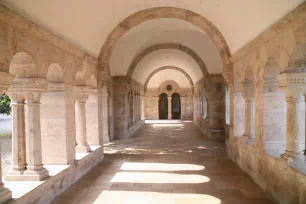
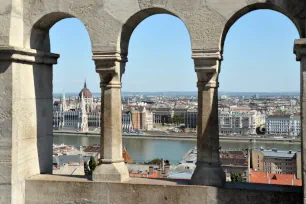
The statue of St. Stephen was created in 1903 by sculptor Alajos Strobl who worked on the bronze sculpture for five years. The monument was officially inaugurated in 1906 in the presence of King Joseph I.
The View
The view from Fisherman’s Bastion is considered to be one of the best in the city, on par with those from Gellért Hill and the Buda Castle. From atop the structure, you have a splendid view of the Danube river and over Pest.
You can see as far as Margaret Island and you can clearly see landmark buildings such as St Stephen’s Basilica, the Parliament, the Academy of Sciences, Gresham Palace, and, in the distance, the Inner City Parish Church. You’ll also catch a glimpse of the Margaret Bridge and the famous Chain Bridge.

